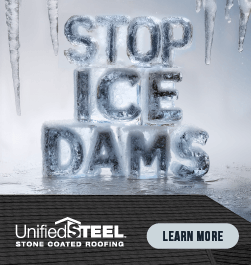What’s causing that roof leak?
August 26, 2025 at 6:00 a.m.AAR Expert John Kenney says, when it comes to your roof, being one step ahead is always the best strategy.
Leaks appear inside your home or building at the most inconvenient times. Whether a steady drip during a storm or a stained ceiling tile discovered after a long weekend, roof leaks can be disruptive, costly and frustrating. But they don’t come out of nowhere. In my years in the roofing industry, I’ve seen that a predictable set of issues causes most leaks and that the earlier you catch them, the easier they are to fix. If you’re a homeowner or building owner, understanding these common leak causes and what to watch for can save you significant time and money.
One of the most frequent culprits is flashing failure. Flashings can be metal or membrane. They seal transitions where a roof meets a wall, chimney, skylight or vent. Because of the change of direction, these areas are vulnerable. Over time, flashings can crack, pull away or rust, allowing water to penetrate the roofing system.
Another common cause is aged or damaged roofing material. On steep-slope homes with asphalt shingles, years of UV exposure, high winds or hail can crack, curl or dislodge the shingles, opening pathways for water intrusion. On flat or low-slope commercial roofs, membrane seams can split or deteriorate, especially if the roof sees a lot of foot traffic. Even metal roofs aren’t immune; loose fasteners or failed sealant around penetrations can lead to trouble. Once water starts traveling between the layers of your roof, it doesn’t take long to show up inside.
Poor drainage is another common issue, especially on low-slope roofs. Water can shorten life expectancy if drains, scuppers or gutters are clogged with debris or the roof isn’t sloped adequately during installation. If you see ponding water after a rainstorm or notice your gutters overflowing, that’s a sign that action may be needed.
Then there are roof penetrations, vents, pipes, HVAC units, satellite mounts and anything that requires cutting through the roof deck. These are all potential leak points if not properly sealed and maintained. Over time, sealants dry out, gaskets shrink and fasteners loosen. One minor breach around a pipe collar or curb can let in more water than you’d think. This is especially true for older roofs whose original installation details may not meet today’s standards.
Weather damage is also a significant factor. A strong windstorm can lift shingles or loosen edge metal. Hail can bruise or fracture roofing materials. Driving rain in the right direction will find the weakest point. After any significant weather event, have a professional inspect your roof.
So how can you, as a property owner, stay ahead of these issues? The answer lies in regular inspections and early action. Hire a professional roofing contractor to inspect your roof at least twice a year, spring and fall are ideal and after any significant storm.
Keep a close eye on ceilings, corners and around skylights or vents for any sign of discoloration or dampness. Water stains aren’t always directly below the leak source; water can travel along rafters or joists before showing up inside, identifying and addressing leaks early before they cause widespread damage or mold problems.
Roof leaks don’t have to be a nightmare, but they require attention and action. By understanding the most common causes of flashing failure, material degradation, poor drainage, penetrations and weather and performing routine inspections, you’ll be in a much better position to protect your property. Water damage is far more expensive than proactive maintenance and when it comes to your roof, being one step ahead is always the best strategy.
John Kenney is the CEO of Cotney Consulting Group. Read his full bio here.











Comments
Leave a Reply
Have an account? Login to leave a comment!
Sign In